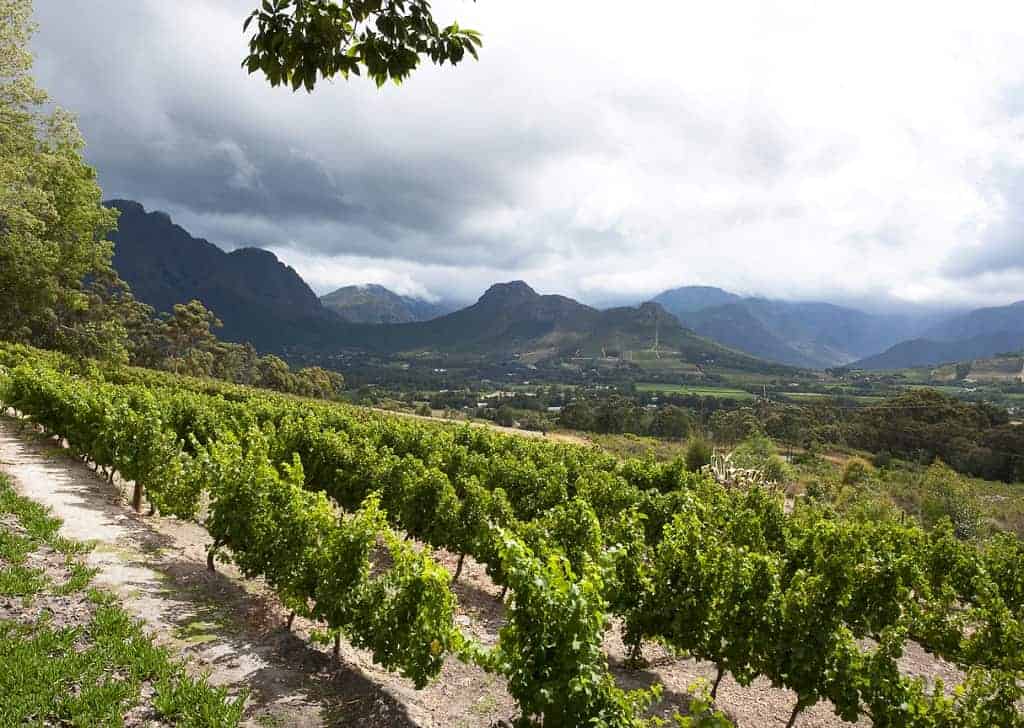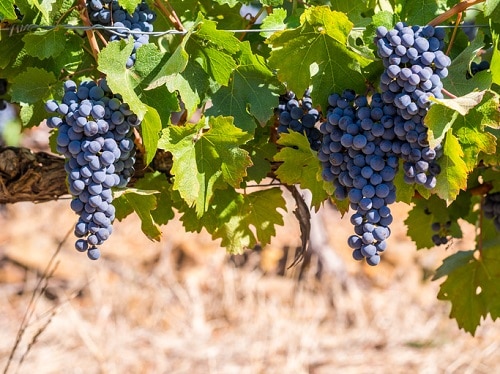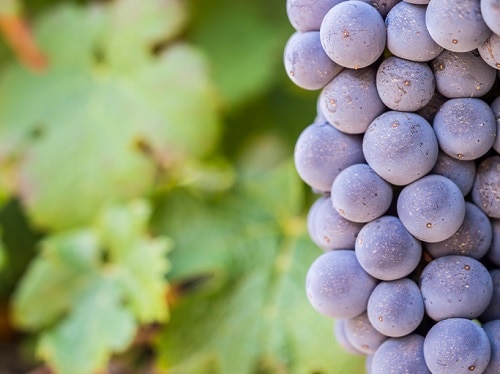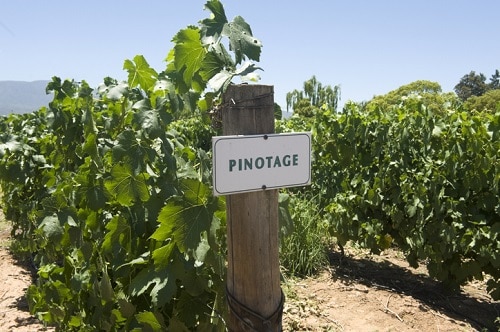Pinotage Grape Variety & Wine Profile: Taste & Food Pairings
Last Updated on August 16, 2022.
Pinotage is arguably the most interesting wine grape because its heritage and resulting flavor profile don’t seem to be aligned at all. This love child of Pinot Noir and Cinsault made its appearance in 1925 as the result of ambitious viticulturists who wanted a more heat-tolerant version of Pinot Noir.
IN THIS GUIDE:
- Taste
- Pairings
- Terroir
- Aging
- Wine Recommendations
- …and more
The name Pinotage comes from blending the local names of the two grapes – ‘Pino’ is fairly obvious, but ‘tage’ comes from Cinsault’s name in South Africa, Hermitage. Viticulturists got their wish because heat tolerant it is, and in the passing century it has become South Africa’s signature grape. However, its flavors aren’t exactly similar to Pinot Noir, or even Cinsault for that matter.
What Does Pinotage Taste Like?
Pinotage is dark – darkly colored, darkly scented, and darkly flavored. Its fruit notes lean way over towards blackberry, plum, and black currant with earthy bramble in there. Its most distinctive note is its unmistakable smokiness that presents itself both on the nose and on the palate. Other notes commonly found in Pinotage are soy sauce, bacon, tar, anise, and pipe tobacco.
Pinotage Food Pairings
Pairings for Pinotage need to be just as bold, and spicy barbecue seems to be the most natural pairing. However, grilled lamb, ribs, and even al pastor will all work beautifully.
Pinotage is likely to overwhelm lighter fare, so be sure to have this wine alongside those big, hearty flavors. It’s worth making South Africa’s traditional braai spice rub which includes garlic, coriander, paprika, cumin, salt, and black pepper for barbecues to have with Pinotage.
Climate and Terroir for Pinotage
Stellenbosch, South Africa is Pinotage’s birthplace but it has spread to most wine-producing regions in the country. Despite initial criticism of the grape, its popularity has grown over the years, particularly for lovers of bold Zinfandel and Syrah. It has therefore spread to other wine regions around the world, though it seems that for now it is limited to New World regions.
Beyond South Africa, Pinotage has been successful in New Zealand, Israel, Brazil, and the United States, particularly in California. As global temperatures are projected to rise, it will be interesting to see if Old World wine regions warm up to experimenting with New World varieties like Pinotage.
How is Pinotage Aged?
Most Pinotages are meant to be drunk upon release. Although the tannins and acidity levels of Pinotage imply they can be aged, many producers harvest riper grapes to extract those dark notes for which Pinotage is known. Some have been experimenting with lighter styles in recent years and it will be interesting to see how they age.
Try these great-tasting Pinotage wines from around the world:
- Kanonkop, Stellenbosch, South Africa
- Painted Wolf, ‘Guillermo,’ Swartland, South Africa
- Beeslaar, Stellenbosch, South Africa
- Fort Ross, Sonoma Coast, California
Learn About These Other Wine Grape Varieties
Written By Jamie Metzgar
Jamie Elizabeth Metzgar began her career in wine by pouring in a tasting room on the East End of Long Island, NY. After moving to New York City, she landed a position at Chambers Street Wines where she was encouraged to pursue wine education at the Wine & Spirits Education Trust (WSET). She earned Level III certification there and has since earned California Wine Appellation Specialist and Certified Specialist of Wine certifications as well. After way too many moves, she has recently landed in Northern California where she is compiling an unofficial roster of dog-friendly tasting rooms.
Fruit
Blackberry, Plum, Black Cherry, Black Currant
Earth & Additional Characteristics
Bramble, Smoke, Soy Sauce, Bacon, Tar, Anise, Pipe Tobacco
The Structure and Style of Pinotage Wines
Body Medium
Sugar Dry
Acid Medium - Minus
Alcohol Medium - Plus
Tannins Medium - Plus




